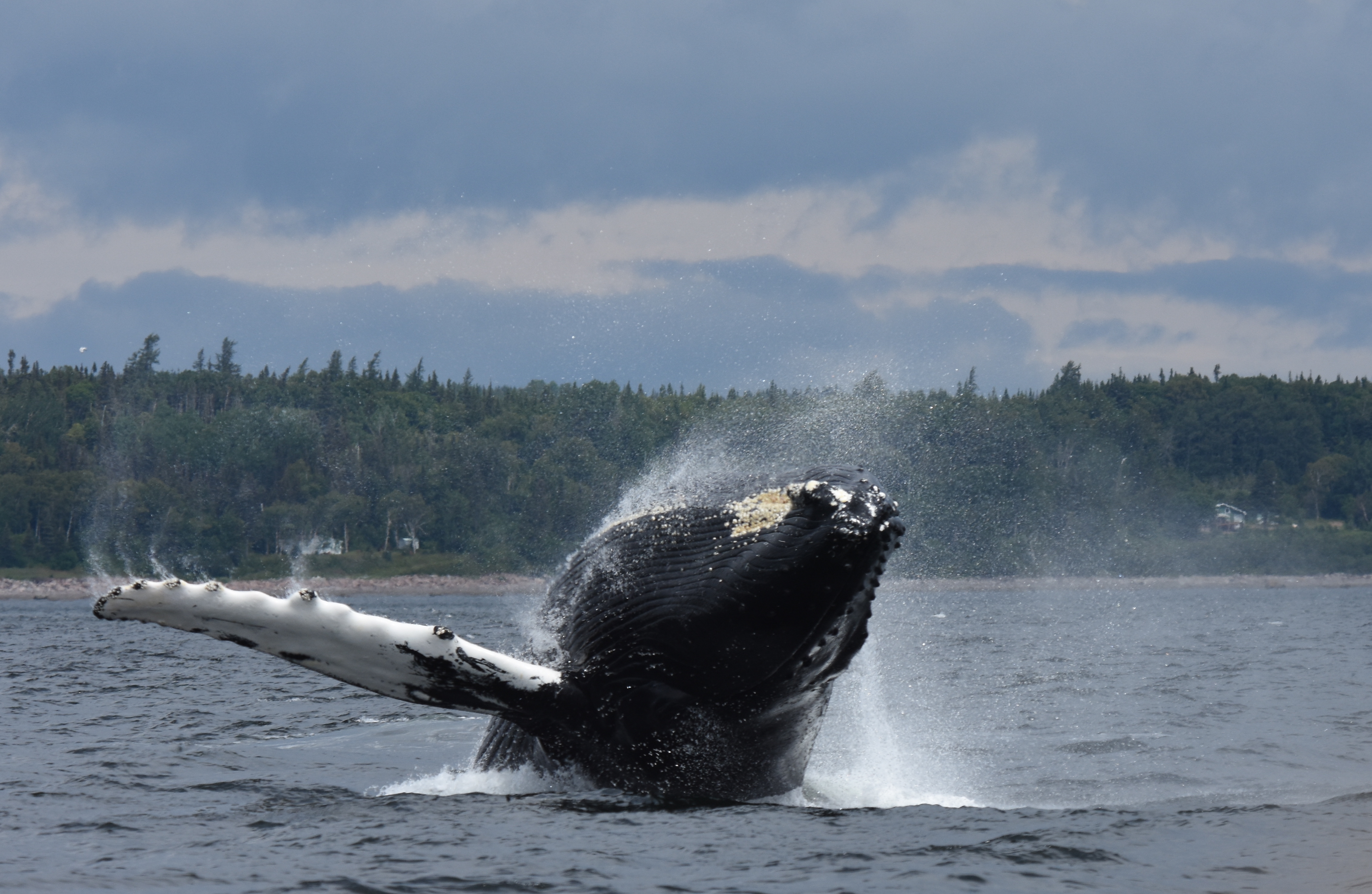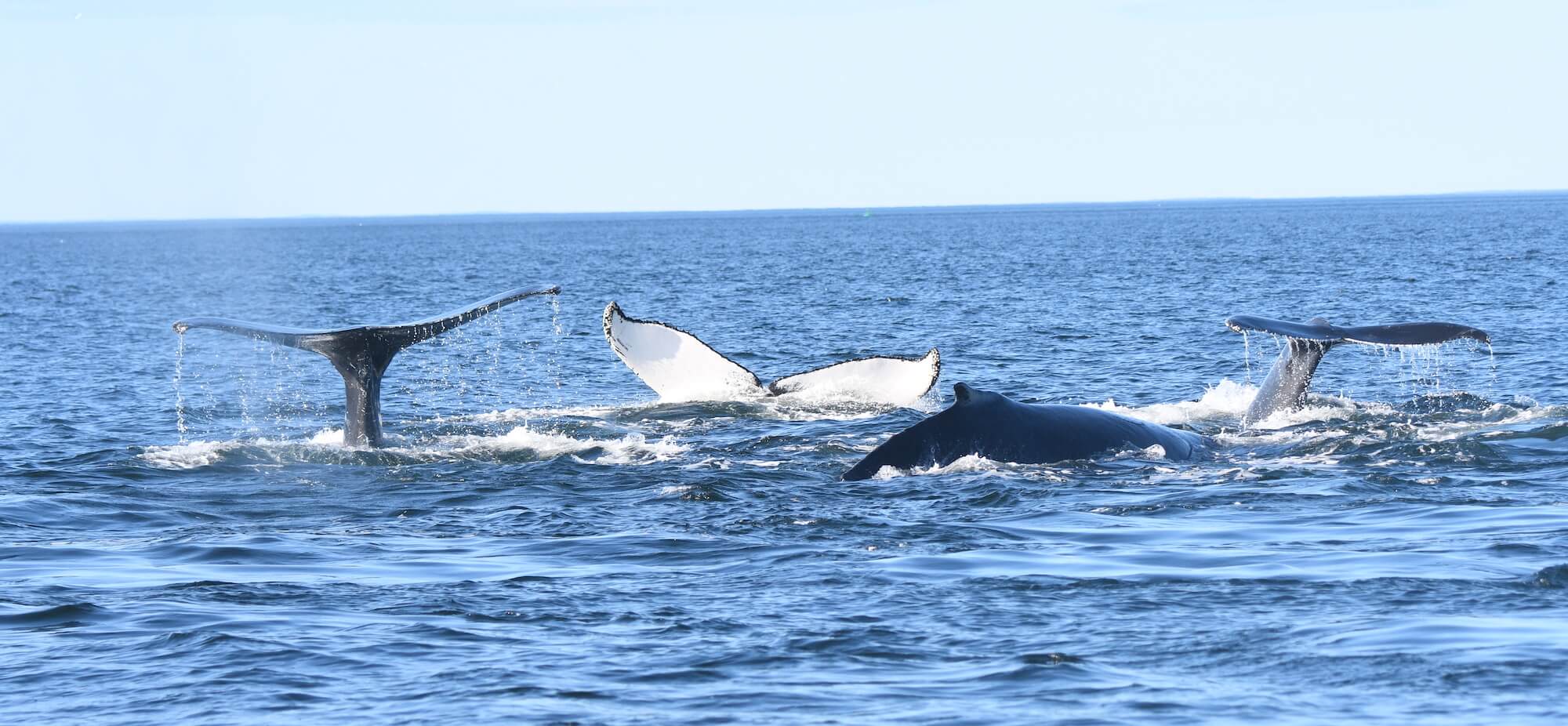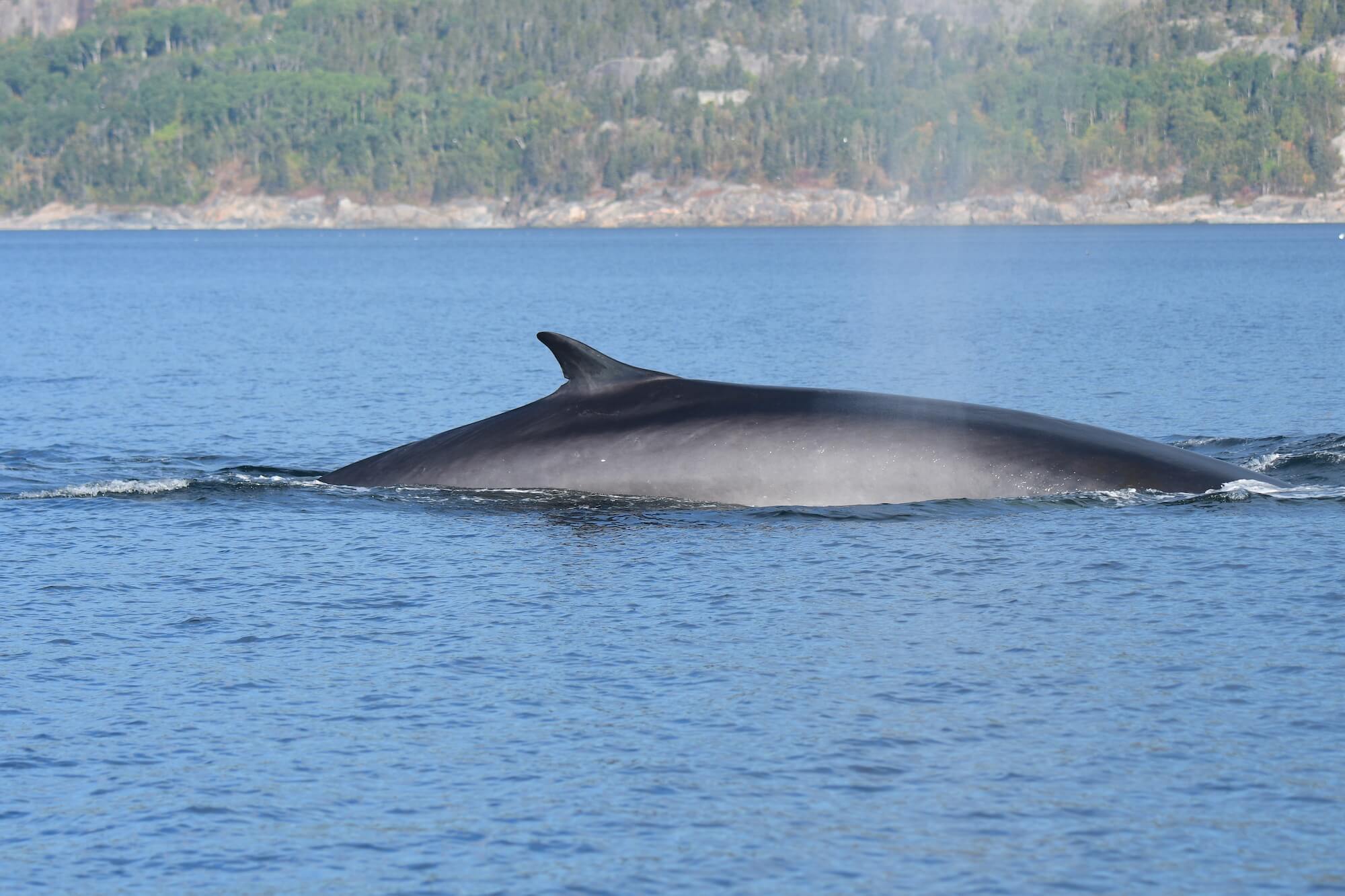“First time ever,” “extraordinary,” “record…” After a while, observers describing the 2021 whale-watching season in the estuary began to run out of superlatives. Researchers and cruise-goers alike were surprised by the number of animals present in and around the Saguenay-St. Lawrence Marine Park.
Observers were particularly excited by the humpbacks and their highly dynamic and acrobatic displays. But should we be celebrating the sudden overabundance of this species in the estuary? When researchers are questioned about the reasons for the strong showing of humpbacks in 2021, the theories retained raise concerns over the long term.
Records numbers
Over the course of Summer 2021, GREMM’s research teams, together with Parks Canada, photographed and identified approximately 70 different humpback whales in the St. Lawrence Estuary. Contributions from captains and naturalists aboard whale- watching boats participating in the program added a further thirty individuals to the list. Thus, over one hundred different humpbacks visited the Saguenay-St. Lawrence Marine Park between June and October 2021!
A few historical data to put this figure into perspective: Until 1999, a single humpback whale entered the Marine Park (some readers may remember Siam, who still visits our waters today); between 1999 and 2017, they numbered fewer than 10; in 2019, 28 were tallied, and in 2020, 29. The same peak of 70 individuals was noted for fin whales in 2021, i.e. more than twice the number of the previous year, which was more typical. Conversely, blue whales were conspicuous by their near total absence, with just 2 individuals identified.
Regardless, summer 2021 was undoubtedly exceptional, and not just because of these statistics. “What’s even more remarkable than these numbers,” points out GREMM’s scientific director Robert Michaud, “is the sustained presence of individuals throughout the season with particularly long stays, as well as the arrival of new individuals in the sector.” In fact, a number of older humpbacks, despite being well known in the gulf, had never before ventured as far upriver as the estuary. Even more surprising, researchers photographed hitherto unknown adults that had never been observed anywhere in the St. Lawrence.
On a quest for food
What might explain the presence of so many humpbacks in the estuary in the summer of 2021? Researchers are rather unanimous: What makes whales move the way they do is food! “There are two possibilities…” points out Robert Michaud, “Either prey was exceptionally abundant in the estuary, or it was extraordinarily lacking elsewhere, which could have driven the whales to fall back on the ‘last restaurant’ open.”
Cristiane C. de Albuquerque Martins, an ecosystem scientist with Parks Canada in the Saguenay-St. Lawrence Marine Park, echoes this view: “The St. Lawrence Estuary is a dead-end alley. If whales came this far, it is probably because they were unable to find enough food elsewhere. They wouldn’t have made the journey for nothing.
”This hypothesis is substantiated by observations made by Richard Sears, founder of the Mingan Island Cetacean Study (MICS), who has been studying whales in the Gulf of St. Lawrence for 45 years: “In 2021, we encountered very few humpbacks, the animals didn’t linger too long in the area and they moved around quite a bit. The same holds true for fin whales. Clearly, the animals scoured the waters but did not find what they were looking for.”
The extended stays of humpback and fin whales in the estuary suggests that the animals found what they were looking for in the Marine Park: a well-stocked pantry! This is also what acoustic surveys carried out in the Marine Park by Parks Canada indicate. Project lead Samuel Turgeon explains, “Unfortunately, our data set this season is insufficient, but the handful of trips we made out to sea did reveal a significant concentration of schooling fish, possibly sand lance. Rarely had I ever seen schools of such scale in any of my previous monitoring work.”
Changing ecosystem
How might we explain the sudden appearance of such exceptional prey density in the estuary? The question remains unanswered. “It’s a large-scale phenomenon that involves a considerable number of oceanographic parameters,” points out Samuel Turgeon, “but it is widely known that pelagic species undergo cycles in their population trends.” It is also known that prey distribution has been affected by global climate change in recent years. In the St. Lawrence, water temperatures are rising, oxygen levels are declining, and currents are changing, reaching new records nearly annually. These profound changes have a ripple effect on prey… and their predators, including whales!
Moreover, Robert Michaud notes that “Up until the 2000s, the estuary was a rather stable system where one could predict the presence of whales from year to year without too much trouble. For the last 20 years, these patterns have been changing and in the past few years, the magnitude of annual variations has been truly spectacular.”
Adapting to survive
“The consequences of climate change will likely be catastrophic for all living beings, predicts Christian Ramp, whale researcher at University of St Andrews, but I believe that whales fall into that category of species that are capable of adapting. We humans have to contend with borders, whereas they have the ability to move around in the immense ocean and adapt their diet to the availability of prey.” The problem? The presence of whales and how they might behave will be increasingly difficult to anticipate, which is a real challenge for conservation. For Robert Michaud, “We saw it with the North Atlantic right whale… No longer can we afford to spend years improving our knowledge before we decide to implement conservation strategies. We need to be quicker and more reactive when adopting new measures and amending existing ones to protect whales more adequately.”
This text is taken from the 2021 edition of Le Souffleur, GREMM’s annual newsletter.








